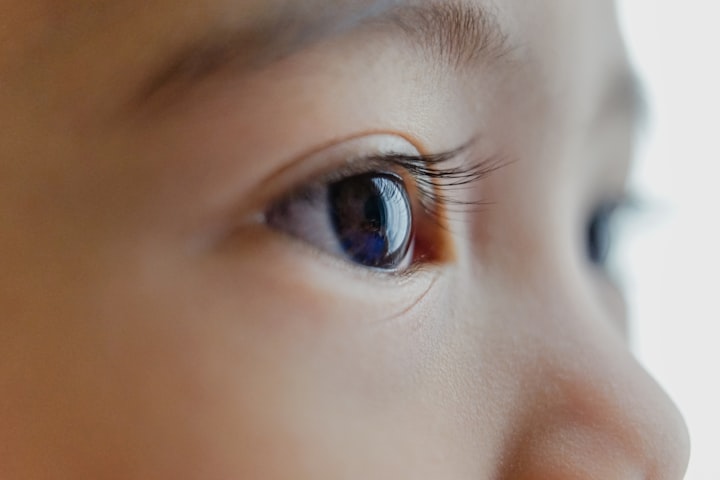The impact of the phone on children's eyes
The phone

The impact of phones on children's eyes has been a subject of concern, particularly due to increased screen time and exposure to digital devices from a young age. Here are some key points regarding this issue:
1. Digital Eye Strain: Extended use of phones and other digital screens can lead to digital eye strain, also known as computer vision syndrome. Symptoms include dry eyes, eye fatigue, headaches, and blurred vision. Children may be particularly susceptible to these symptoms due to their developing visual systems.
2. Blue Light Exposure: Digital screens emit blue light, which can penetrate deep into the eye and may affect the retina. Prolonged exposure to blue light, especially before bedtime, can disrupt sleep patterns and potentially contribute to long-term eye damage. There's ongoing research about the effects of blue light on eye health, especially in children.
3. Decreased Outdoor Activities: Excessive phone use can lead to a decrease in outdoor activities, which are crucial for overall eye health. Outdoor activities help prevent myopia (nearsightedness), whereas prolonged near work, such as staring at screens, may contribute to its development.
4. Impact on Development: Excessive screen time during childhood can potentially affect visual development. Some experts suggest that prolonged screen time may lead to difficulties with focusing, eye teaming, and eye movement skills, which are essential for reading and other visual tasks.
5. Screen Time Guidelines: Various organizations, including the American Academy of Pediatrics, provide guidelines for screen time for children. These guidelines recommend limiting screen time and ensuring that it doesn't interfere with other important activities such as sleep, physical activity, and face-to-face social interactions.
6. Preventive Measures: To mitigate the impact of phones on children's eyes, several preventive measures can be taken. These include following screen time guidelines, encouraging regular breaks during screen use, ensuring proper lighting and ergonomic setups, and promoting outdoor activities.
7. Regular Eye Exams: Regular eye exams are essential for monitoring children's eye health and detecting any issues early on. Parents should schedule comprehensive eye exams for their children, especially if they notice any signs of eye discomfort or vision problems.
To mitigate the impact of phones on children's eyes, several preventive measures can be taken:
1. Limit Screen Time: Follow screen time guidelines recommended by organizations like the American Academy of Pediatrics. Limit the amount of time children spend on phones and other digital devices, ensuring that screen time doesn't interfere with other important activities such as sleep, physical activity, and face-to-face social interactions.
2. Encourage Breaks: Encourage children to take regular breaks during screen use. The 20-20-20 rule is often recommended, where every 20 minutes, take a 20-second break to look at something 20 feet away. This can help reduce eye strain and fatigue.
3. Promote Outdoor Activities: Encourage children to spend more time outdoors engaging in activities that require distance vision, such as playing sports or exploring nature. Outdoor activities are beneficial for eye health and can help prevent myopia.
4. Ensure Proper Lighting: Ensure that the environment where children use phones or other digital devices has proper lighting. Avoid glare from windows or overhead lights, and ensure that the screen brightness is adjusted to match the surrounding lighting conditions.
5. Maintain Ergonomic Setups: Ensure that children use phones and other digital devices in a comfortable and ergonomic manner. Encourage them to hold devices at a comfortable distance (about arm's length) and angle, and to maintain good posture while using screens.
6. Promote Good Habits: Teach children good habits for healthy screen use, such as holding screens at eye level, blinking regularly to prevent dry eyes, and avoiding using devices in dimly lit environments.
7. Schedule Regular Eye Exams: Schedule comprehensive eye exams for children with an eye care professional regularly, even if they do not report any vision problems. Eye exams can help detect any issues early on and ensure that children's eyes are healthy and developing properly.
8. Model Healthy Behavior: Set a good example by modeling healthy screen habits yourself. Limit your own screen time, especially in front of children, and prioritize activities that promote eye health and overall well-being.
About the Creator
Burim Dedushi
Writing is my passion, it calms the soul and relaxes the mind





Comments (1)
Very nice piece, I hope all with small children read it! The human race might evolve to have bent necks and huge thumbs. 🤔